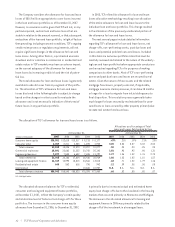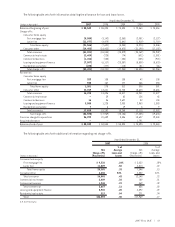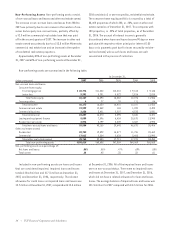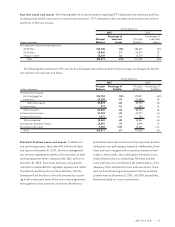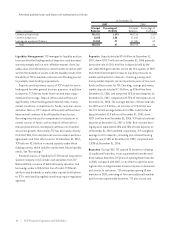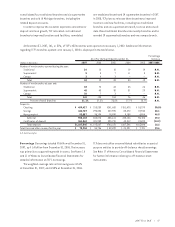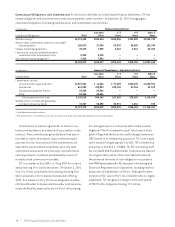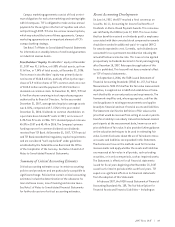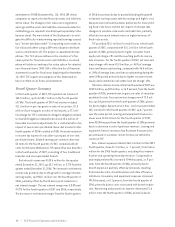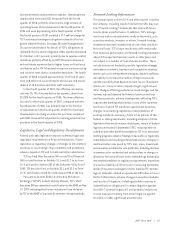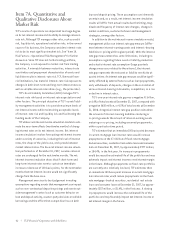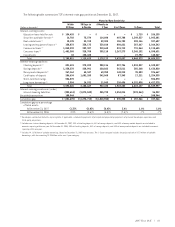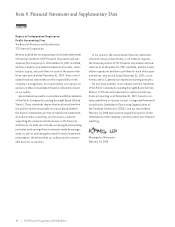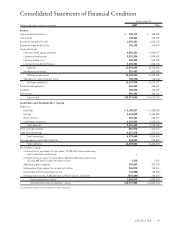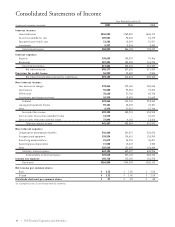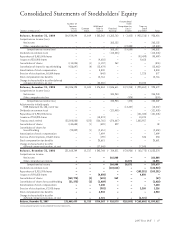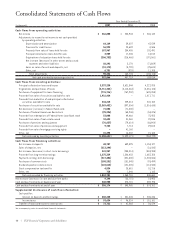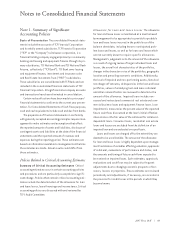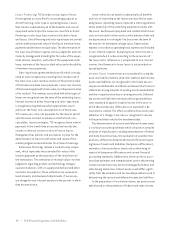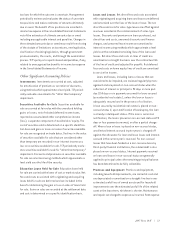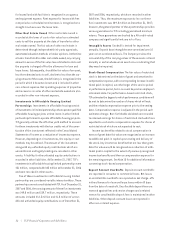TCF Bank 2007 Annual Report Download - page 62
Download and view the complete annual report
Please find page 62 of the 2007 TCF Bank annual report below. You can navigate through the pages in the report by either clicking on the pages listed below, or by using the keyword search tool below to find specific information within the annual report.42 | TCF Financial Corporation and Subsidiaries
Item 7A. Quantitative and
Qualitative Disclosures About
Market Risk
TCF’s results of operations are dependent to a large degree
on its net interest income and its ability to manage interest-
rate risk. Although TCF manages other risks, such as credit
risk, liquidity risk, operational and other risks, in the normal
course of its business, the Company considers interest-rate
risk to be its most significant market risk. See “Item 1A.
Risk Factors – Operational Risk Management” for further
discussion. Since TCF does not hold a trading portfolio,
the Company is not exposed to market risk from trading
activities. A mismatch between maturities, interest rate
sensitivities and prepayment characteristics of assets and
liabilities results in interest-rate risk. TCF, like most finan-
cial institutions, has material interest-rate risk exposure to
changes in both short-term and long-term interest rates as
well as variable interest rate indices (e.g., the prime rate).
TCF’s Asset/Liability Committee (ALCO) manages TCF’s
interest-rate risk based on interest rate expectations and
other factors. The principal objective of TCF’s asset/liabil-
ity management activities is to provide maximum levels of
net interest income while maintaining acceptable levels
of interest-rate risk and liquidity risk and facilitating the
funding needs of the Company.
TCF utilizes net interest income simulation models to esti-
mate the near-term effects (next twelve months) of chang-
ing interest rates on its net interest income. Net interest
income simulation involves forecasting net interest income
under a variety of scenarios, including the level of interest
rates, the shape of the yield curve, and spreads between
market interest rates. The base net interest income simula-
tion performed as of December 31, 2007, assumes interest
rates are unchanged for the next twelve months. The net
interest income simulation shows that if short-term and
long-term interest rates were to sustain an immediate
increase or decrease of 100 basis points, for the next twelve
months that net interest income would not significantly
change from the base case.
Management exercises its best judgement in making
assumptions regarding events that management can impact
such as non-contractual deposit repricings and events out-
side management’s control such as customer behavior on
loan and deposit activity, counter-party decisions on callable
borrowings and the effect that competition has on both
loan and deposit pricing. These assumptions are inherently
uncertain and, as a result, net interest income simulation
results will differ from actual results due the timing, mag-
nitude and frequency of interest rate changes, changes in
market conditions, customer behavior and management
strategies, among other factors.
In addition to the net interest income simulation model,
management utilizes an interest rate gap measure (differ-
ence between interest-earning assets and interest-bearing
liabilities re-pricing within a given period). While the interest
rate gap measurement has some limitations, including no
assumptions regarding future asset or liability production
and a static interest rate assumption (large quarterly
changes may occur related to these items), the interest
rate gap represents the net asset or liability sensitivity at
a point in time. An interest rate gap measure could be signifi-
cantly affected by external factors such as loan prepayments,
early withdrawals of deposits, changes in the correlation of
various interest-bearing instruments, competition, or a rise
or decline in interest rates.
TCF’s one-year interest rate gap was a negative $1 billion,
or 6.4% of total assets at December 31, 2007, compared with
a negative $630 million, or 4.3% of total assets at December
31, 2006. A negative interest rate gap position exists when
the amount of interest-bearing liabilities maturing or
re-pricing exceeds the amount of interest-earning assets
maturing or re-pricing, including assumed prepayments,
within a particular time period.
TCF estimates that an immediate100 basis point decrease
in current mortgage loan interest rates would increase
prepayments on the $7.4 billion of fixed-rate mortgage-
backed securities, residential real estate loans and consumer
loans at December 31, 2007, by approximately $977 million,
or 134.4%, in the first year. An increase in prepayments
would decrease the estimated life of the portfolios and may
adversely impact net interest income or net interest margin
in the future. Although prepayments on fixed-rate portfolios
are currently at a relatively low level, TCF estimates that
an immediate 100 basis point increase in current mortgage
loan interest rates would reduce prepayments on the fixed-
rate mortgage-backed securities, residential real estate
loans and consumer loans at December 31, 2007, by approx-
imately $257 million, or 35.4%, in the first year. A slowing
in prepayments would increase the estimated life of the
portfolios and may favorably impact net interest income or
net interest margin in the future.


